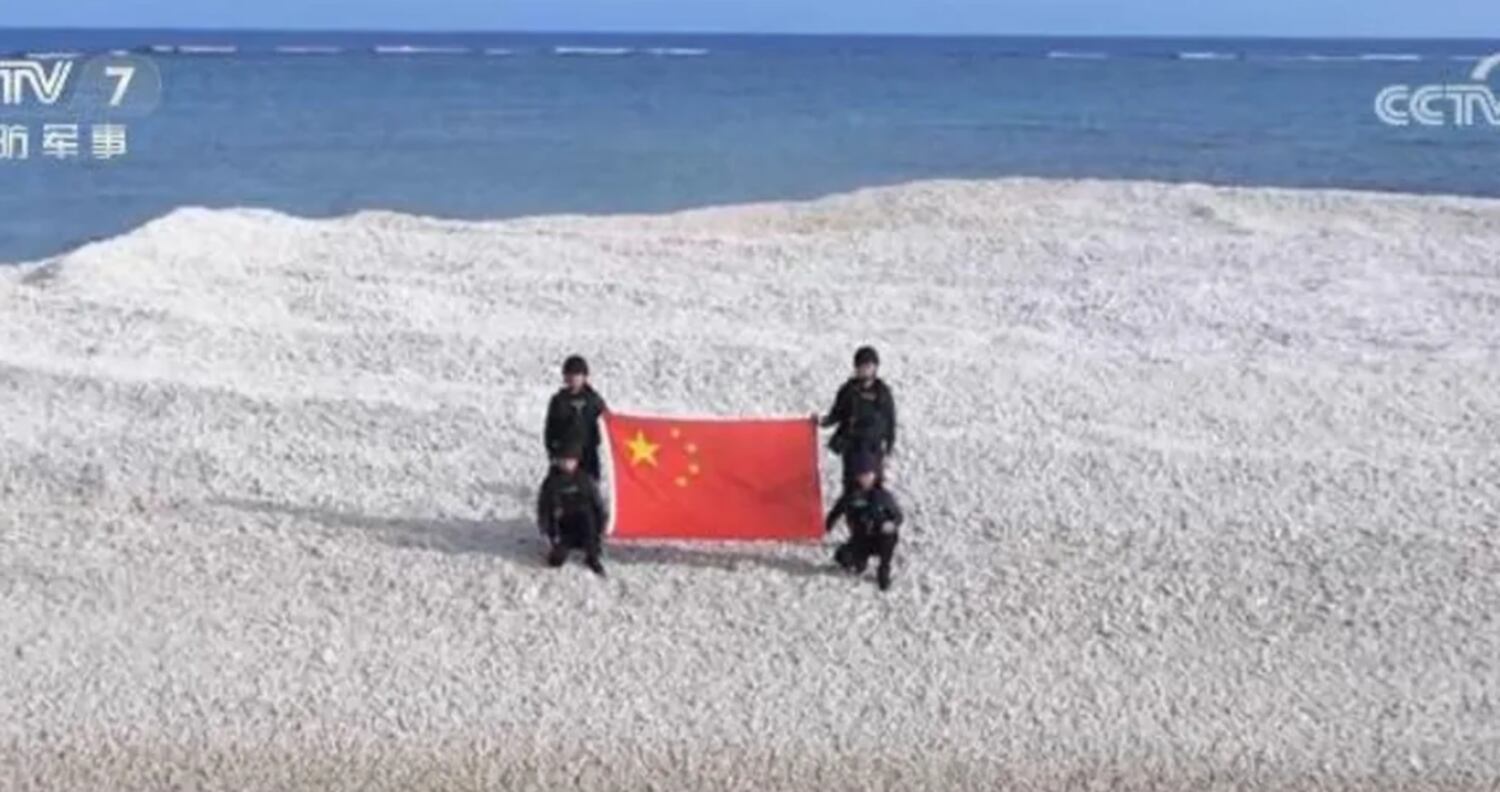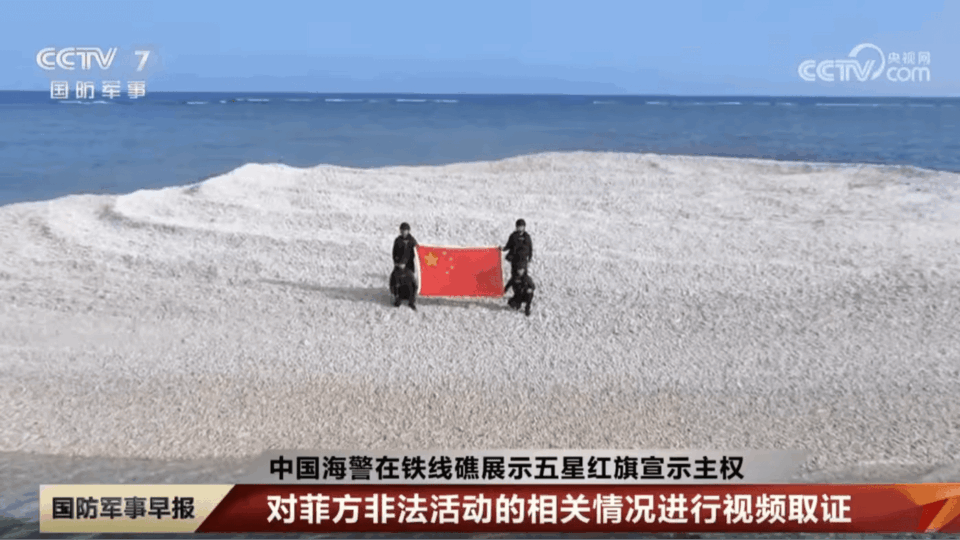TAIPEI, Taiwan – China and the Philippines have staged rival flag-raising displays on a contested sandbank in the South China Sea, further escalating tensions between the two nations.
The standoff occurred at Sandy Cay, near the Philippines’ outpost of Thitu Island, right when the U.S. and the Philippines launched their annual “Balikatan” military drills, which for the first time include an integrated air and missile defense simulation.

Sandy Cay holds strategic value because its 12-nautical-mile territorial zone under international law overlaps with the area around Thitu Island, a key site for Manila to monitor Chinese activity in the Philippines’ exclusive economic zone.
The latest flare-up appears to have started on Thursday, after Chinese state media reported that the Chinese Coast Guard had landed on the sandbank two weeks earlier, hoisted a national flag, and “exercised sovereign jurisdiction.”
“Since 2024, the Philippines has made multiple attempts to send vessels near Chinese-held features in the South China Sea to monitor what it describes as artificial island-building activities,” the state-run broadcaster CCTV reported on Saturday. It published a photograph of five black-clad people standing on the uninhabited reef as a dark inflatable boat bobbed in the nearby water.
In response, the Philippines Coast Guard spokesperson Jay Tarriela said on Sunday that its navy, coast guard and police personnel had deployed to Sandy Cay in four rubber boats and had “observed the illegal presence” of a Chinese Coast Guard vessel and seven Chinese maritime militia vessels.
“This operation reflects the unwavering dedication and commitment of the Philippine government to uphold the country’s sovereignty, sovereign rights and jurisdiction in the West Philippine Sea,” said Tarriela, who posted footage of the Philippine flag being displayed.

The term “West Philippine Sea” is used by the Philippines to refer to parts of the South China Sea that it claims, although the designation is disputed by China.
William Yang, a senior analyst for Northeast Asia at the International Crisis Group, said China is showcasing both its ability and determination to assert its territorial claims throughout the South China Sea.
China and the Philippines have long been locked in a territorial dispute over parts of the South China Sea, a vital waterway rich in resources and trade routes.
Beijing claims nearly the entire sea under its “nine-dash line,” a claim rejected by an international tribunal in 2016, which ruled in favor of the Philippines.
Despite the ruling, China has continued to assert its presence through patrols, island-building, and militarization, while the Philippines has sought to defend its claims through diplomatic protests and military partnerships.
“It serves as a warning to the Philippines and other claimant states in the region that any attempt to undermine Chinese territorial integrity will be met with resolute and strong Chinese responses,” Yang told Radio Free Asia.
Huang Tsung-ting, an associate research fellow with Taiwan’s Institute for National Defense and Security Research, believes China has recently adopted a more defensive posture toward the Philippines in the South China Sea.
“Compared to 2023 to the first half of 2024, when China escalated tensions in the South China Sea and attempted to seize islands and reefs as a way to pressure the U.S. and the Philippines diplomatically, its current approach is more defensive and passive,” said Huang.
The latest dispute between two nations came as the U.S. and Philippines forces are conducting annual Balikatan exercises, which Beijing has condemned as “provocative.”
The flag raise was “a calculative move by Beijing to show Washington and Manila that it has the ability to establish presence anywhere they want in the South China Sea and that Beijing is not going to back down in the face of the increased cooperation between the U.S. and the Philippines,” International Crisis Group’s Yang said.
While visiting Manila last month, U.S. Defense Secretary Pete Hegseth said Washington was “doubling down” on its alliance with the country and was committed to rebuilding deterrence against China.
Huang shares a similar view.
“Even though the number of U.S. troops participating in this year’s Balikatan exercise seems slightly lower – by about 2,000 compared to last year – the overall posture of cooperation still looks strong enough to cause concern for China,” he said.
Edited by Taejun Kang and Stephen Wright.




